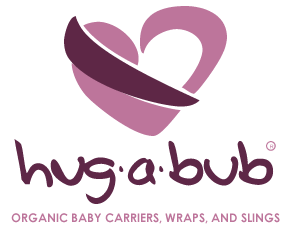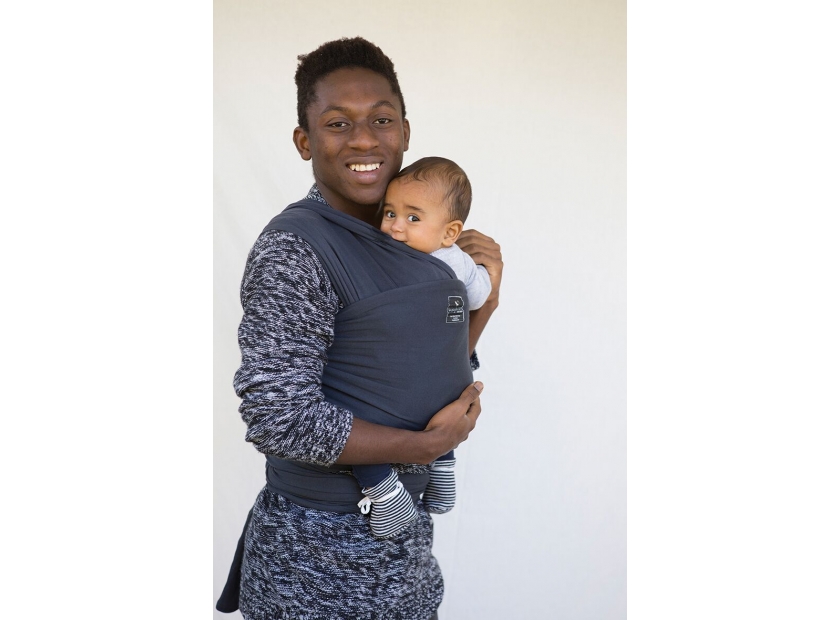More than 75% of parents or mothers expecting a baby do not know that Australia has no standards covering baby carriers and slings.
Only 25% of respondents in the Fertile Mind Babywearing in Australia survey said they knew this was the case.
One respondent wrote "I was not aware of that and that is very concerning" while another wrote "That surprises me".
Hug-a-Bub meets US and EU standards for baby slings, bringing peace of mind to parents in Australia and New Zealand in the absence of local standards.
The survey, now in its fifth year, asked 1629 Australian parents about baby carriers and their use.
Certified baby carrier instructor Christine Kininmonth, Director of Fertile Mind, said it was concerning also to see that almost half of all respondents did not know the T.I.C.K.S. rule (an acronym for the internationally-recognised rules to check baby is in a safe carrying position).
"Given that the ACCC is pushing education over standards to regulate the safety of the Australian baby carrier industry, it's imperative parents educate themselves on what constitutes a safe position for their baby."
Christine said the survey was part of Fertile Mind's commitment to educating parents, and stemmed from her own disappointing experience with babywearing more than a decade ago.
"Nobody taught me what was safe or good for my babies' development, and I'm not going to stand by and watch modern parents make the same mistakes. My business partner, my staff and I are trained by the best baby carrier educator in the world, and we want to pass this information to as many parents as possible."
Most respondents said the onus on educating parents fell to baby carrier and sling manufacturers, as well as post-natal and pre-natal midwives and nurses.
Christine said it was more important than ever as 92% of pregnant survey respondents planned to use a baby carrier or sling when their baby was born and 88% of surveyed parents said they were currently wearing or had used a baby carrier or sling.
Almost all say they planned to begin to use, or already had used their carrier, while their baby was aged newborn to 3 months.
The survey highlights some interesting statistics on baby carrier ownership and use.
More parents use a baby carrier than their pram to settle their babies, survey finds.
68% of respondents to the Babywearing in Australia survey say they use a baby carrier more often than their pram to settle their baby, especially when they are young.
While heavier and older babies were settled in the pram, many respondents gave an answer similar to this one "My pram now, as my youngest is nearly two, but for the first eight months or so she lived in my front carrier."
Many said they alternated, depending on what they were doing, whether they had other children to attend to, and the weather conditions.
45% of parents bought at least one carrier or sling online.
39% bought at least one carrier or sling secondhand.
63% turned to YouTube to learn how to use their carrier or sling and 26% learned at a babywearing or sling group.
38% have attended a babywearing or sling group, although a few commented they didn't know such a thing existed. "(I) didn't know there was such a group. Would love to meet other people doing this though".
The most popular baby carrier type is the "soft structured carrier" with at least one being used/owned by 68% of the respondents. 50% of respondents owned at least one of the next most popular type, the stretchy wrap/sling. Ring slings and front pack carriers were almost tied as the next most popular style. Only 2% owned or used a hip seat style carrier.
Choosing a carrier is largely attributed to the user doing online research. 35% said this is how they chose their carrier, although 27% looked to recommendations from friends for their choice.
"Essential" features in the carrier of choice were comfort for baby, comfort for the wearer, and encouraging baby"s correct postural development. A hip healthy product was just behind the top three choices, but still considered essential for 66% of respondents.
Most users of baby carriers say they will ca
rry their baby between 1 to 3 hours a day, although one respondent said "Depends. Up to 7 if busy!".
Convenience is the main reason parents choose to use a baby carrier or a sling, with comfort, settling and bonding being similarly weighted as reasons people were babywearing.
Nearly 30% of respondents said preventing or alleviating post natal depression was highly rated as a reason they used or would use a baby carrier.
Attachment parenting philosophy was ahead of "baby carriers are trending"
as a more compelling reason for choosing to use a baby carrier, however 47% of respondents still said it did not factor much or at all in their decision.
Finally, it also appears that for some, one carrier is not enough, with 6% of parents owning up to owning more than 6 baby carriers and 17% to owning 3. One surveyed respondent owns 18 carriers!




